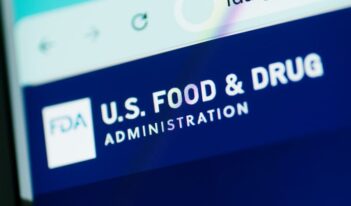
In this week’s Saturday Seminar, we collect scholarship discussing quality and safety issues within U.S. food regulation.
Poor diet is the leading cause of mortality in the United States, as nutrition- and obesity-related diseases take well over half a million lives each year. Some experts argue that inadequate food safety regulation is to blame.
Food safety directly affects every American citizen, every day. With every trip to the grocery store, meal, and morning coffee, food safety regulation is at play.
Over the past two decades, processed food has grown to dominate the U.S. food system. Studies suggest that ultra-processed foods account for over half of consumer calorie intake.
Although the increased popularity of processed food has resulted in tasty, affordable, and long-lasting products, some scholars argue that these products are harmful to consumers’ health. To produce particular flavors, colors, scents, and textures, manufacturers use a variety of additives, some of which experts have linked to diseases and premature death. And some reports have raised concerns about toxic additives in product packaging and contaminated soil.
Studies have connected diets high in these ultra-processed foods to an increased risk of non-communicable chronic diseases, such as diabetes, obesity, hypertension, heart disease, certain cancers, and even dementia.
These concerns raise a key question: Who is regulating this food system? Under the current regulatory framework, three main federal agencies oversee food safety regulation in the United States: the Food Safety and Inspection Service of the U.S. Department of Agriculture, the U.S. Food and Drug Administration (FDA), and the Centers for Disease Control and Prevention.
The Food, Drug, and Cosmetic Act governs processed products entering the food supply, and its Food Additives Amendment regulates additives. This latter law requires additives to have pre-market FDA review, unless the substance satisfies one of few exceptions. The GRAS provision is one such exception; it allows manufacturers to use substances without FDA review if they are “generally recognized as safe.” FDA officials have suggested that exceptions such as GRAS are safe and efficient, enabling continued innovation within the food industry. Critics of GRAS argue that it is a loophole that facilitates the under-regulation of potentially harmful food additives.
What risks lie within the American food system, and are regulators stepping up to the plate?
In this week’s Saturday Seminar, we feature the work of scholars addressing food safety issues and potential solutions to its regulation in the United States.
- In an article published in the California Law Review, Emily M. Broad Leib of Harvard Law School and Margot J. Pollans of Pace Elisabeth Haub School of Law argue for a broader definition of “food safety” in the United States. Leib and Pollans explain that the current regulatory approach to food safety, confined largely to isolated instances of foodborne illness or acute ingestion-related risks, is too narrow. The U.S. food system, they contend, has too many under-regulated risks. Lieb and Pollans advocate greater regulation of long-term ingestion health risks and systemic issues related to food production, distribution, storage, and disposal. Furthermore, they propose a comprehensive regulatory approach which would assess risks cumulatively rather than individually. Broadening the regulatory scope would allow for a more accurate cost-benefit analysis and provide the public with greater access to information, they argue.
- In an article published in the Food and Drug Law Journal, Roxana R. Soroudi discusses the dangers of food additives and their regulation within the United States. Finding the current regulatory scheme to be inadequate, Soroudi provides a critique of the GRAS provision of the Food Additives Amendment of 1958. She argues that the current regulatory framework allows manufacturers to make independent GRAS determinations without notifying FDA, enabling them to bypass agency oversight entirely. Allowing manufacturers to self-determine the safety of their own ingredients defies the regulatory process, Soroudi contends. She argues that it greatly threatens consumers’ health and access to accurate food information. Instead, Soroudi proposes making FDA notification mandatory, forbidding novel substances from obtaining GRAS status, and expanding from acute to cumulative risk assessment.
- In a recent article published in the Maryland Law Review, Deepti A. Kulkarni of Georgetown University Law Center discusses the ways in which regulators have responded to modern advancements in food production and processing. She explains that, even though consumer expectations and interests have dramatically evolved, regulatory agencies created by statutes enacted nearly half a century ago are confronted with the challenge of regulating today. According to Kulkarni, the age of these statutes raises questions about the effectiveness of the current regulatory scheme. She argues that the extent to which statutes such as the Plant Protection Act and Federal Insecticide, Fungicide, and Rodenticide Act appropriately address the profusion of new food products in the market depends on the policies of the agency or state at issue. Although some agencies have successfully implemented new policies, as the Animal and Plant Health Inspection Service did with its final rule amending the regulation of genetic engineering, others continue to face substantial uncertainty, according to Kulkarni.
- Zemichael Gizaw of the University of Gondar explores the safety risks common to today’s food market in a recent literature review published in Environmental Health and Preventative Medicine. Gizaw accounts for seven safety-related public health risks common across the world that expose consumers to a variety of chemical, biological, and physical contaminants harmful to human health. Although some risks may be specific to an area or country, the modern food market spreads these effects across national borders, Gizaw argues. Specifically, he finds that food safety-related public health risks are most common in developing countries, where regulatory services are weak and may not compel compliance with hygiene and safety requirements.
- In a working paper published as part of the Bayreuth Food Law Working Paper Series, Jessica Vapnek of University of California Hastings College of the Law, Kai P. Purnhagen of the University of Bayreuth, and Ben Hillel of Gambit Legal, APC compare the regulation of novel foods in the United States and the European Union (EU). According to Vapnek, Purnhagen, and Hillel, novel foods are foods that are produced using new technologies. In the United States, authorities neither specifically define nor regulate novel foods, they explain. The EU, however, has a specific regulatory framework for novel foods, Vapnek, Purnhagen, and Hillel discuss. They explain that, because of these different approaches to regulation, foods containing nanomaterials, which are regulated as novel foods in the EU, are subject to more stringent requirements and monitoring in the EU than in the United States.
- In an article published in the International Journal of Environmental Research and Public Health, Claudia Campanale of the Italian Water Research Institute and several coauthors analyze the effects of additives on human health. The EU classifies as hazardous many substances that are regular ingredients in everyday products in the EU, Campanale and her coauthors note. Microplastics transfer to food in plastic-based packaging during processing and storage, and then the chemical additives they contain can contaminate the soil in which food grows, they explain. Campanale and her coauthors argue that ingesting contaminated food is one of the major ways microplastics enter the human body, and they also cite a recent study finding significant amounts of microplastics in sugar, salt, alcohol, and bottled water.



